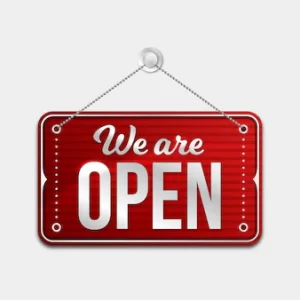
If you enjoy cooking, serving food, or bringing people together over a meal, the restaurant business may be right for you. It is an exciting business venture to open your own restaurant. However, desiring to operate a restaurant and knowing how to manage a restaurant are two completely different things.
Starting your own restaurant can be difficult, especially given the high level of competition in the sector, to develop a successful restaurant business, it is important to take the necessary steps. While starting a restaurant is exciting, it is also time-consuming and one of the toughest businesses to successfully launch.
Why do restaurants go out of business?

There was no planning. You’ll spend a lot of time planning out every detail of your restaurant before you launch. From kitchen appliances to menus, to staff selections and location, the planning stage can make or break your restaurant.
Funding
The cost of opening a new restaurant is often expensive, so it is important to start budgeting early. Factor in rental costs, equipment, food inventory, staff salaries, permit costs, marketing, and necessary start up capital, the expenses can also pile up. Figure out what you’ll need to get started, as well as daily upkeep costs until you can become profitable. If you aren’t good with budgeting, you may need the help of an accountant.
There are several choices to explore for funding, ranging from getting an investor to obtaining a small business loan. Ensure you acquire a good grasp of your predicted cash flow, determine your break-even point and do a financial analysis.
Business plan
You will not be able to realize your dream of opening a restaurant without a clear and well-organized business plan. The business plan shoud cover the complete process of opening and operating your restaurant; it should also detail how the restaurant will take shape and operate after it opens its doors. Your business plan will help you through the process of obtaining funds from possible investors and developing a forecasted financial strategy.
Target customers
The type of customers you want to attract will affect the type of restaurant you want to operate. It is important to consider the income level, the age and the lifestyle of the customers you want to attract. For instance, do you want to attract customers that typically take their time while eating? Will your target audience be willing to travel to the restaurant?

How much money will they be willing to pay for their meal? Is your target customer available early morning, late evening and/or at any time during the month? Once you know the answers to these questions, you will have a clearer vision about the type of restaurant you want to own, the menu, the price range and even the decor.
Permits and licensing
Before you open your restaurant, make sure you have all of the necessary licenses and permits in place. Before you can start operating, you may have to pass many inspections. Find out what your city requires for your business by contacting local authorities. You must also consider state and federal regulations, so do your research thoroughly.
Menu
Your restaurant’s menu is the focal point, and it should reflect your concept and brand. However, it can also be used as a marketing technique to persuade new customers to try your business. Your descriptions should be brief but engaging for your target audience.

Examine current cuisine trends and, if they align with your restaurant’s theme, include them on your menu. You should also think about the cost of each menu item and calculate the predicted profit.
Your menu will inform the equipment you’ll need to buy, food suppliers, and even staff, especially the chefs. Waive Menu is a tool that helps to plan and manage these efficiently.
Work Hours
It’s critical to realize that as a restaurant owner, you won’t be able to take vacations or days off. This isn’t a job that requires 40 hours per week. Expect to spend the majority of your time working at the restaurant.

Location
The location of a restaurant may make or destroy it. During the process a location, visibility and foot traffic are two crucial elements to consider. You should also consider the size and shape of the inside to see if it’s a good fit for your restaurant’s layout.
Marketing strategy
It is very important to have a marketing plan that raises awareness, attracts new customers, and builds a devoted following before opening a restaurant.

You might employ a variety of marketing strategies, from social media to a soft opening to generate buzz.
Brand Consistency
Your brand is communicated in every aspect of your business. So, in order to develop a distinct and memorable brand, you must examine every element for consistency. That involves examining your restaurant’s visual aspects — the name, the logo, menus, decor, uniforms, and so on — as well as its written elements (or brand voice) — your website and other marketing channels such as social media — to ensure they reflect your objective.
Delivery Options
Many restaurants are experimenting with food delivery services in order to reach a larger consumer base. This opens up a whole new market for your business and can help you stay competitive with others that use the same services.
Waive provides you with the best delivery management platform for your business, you should check it out.



